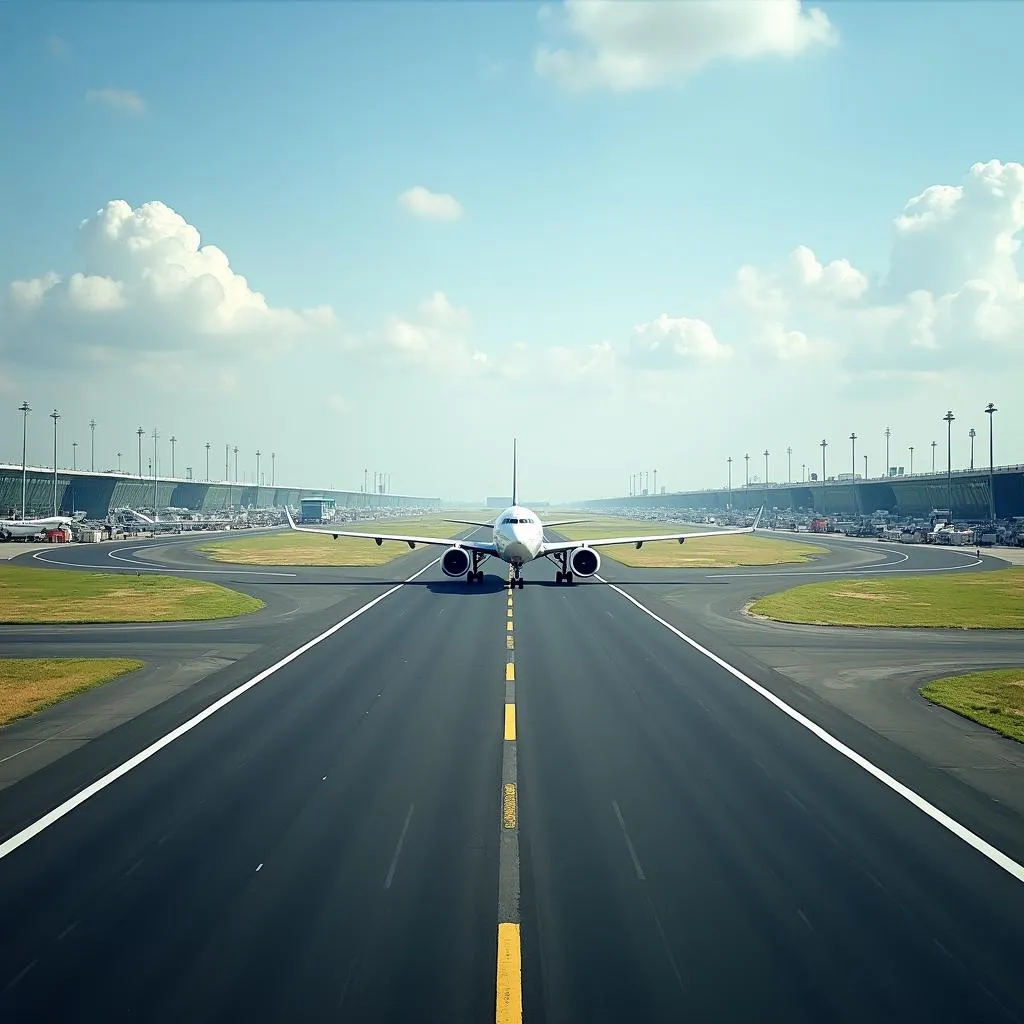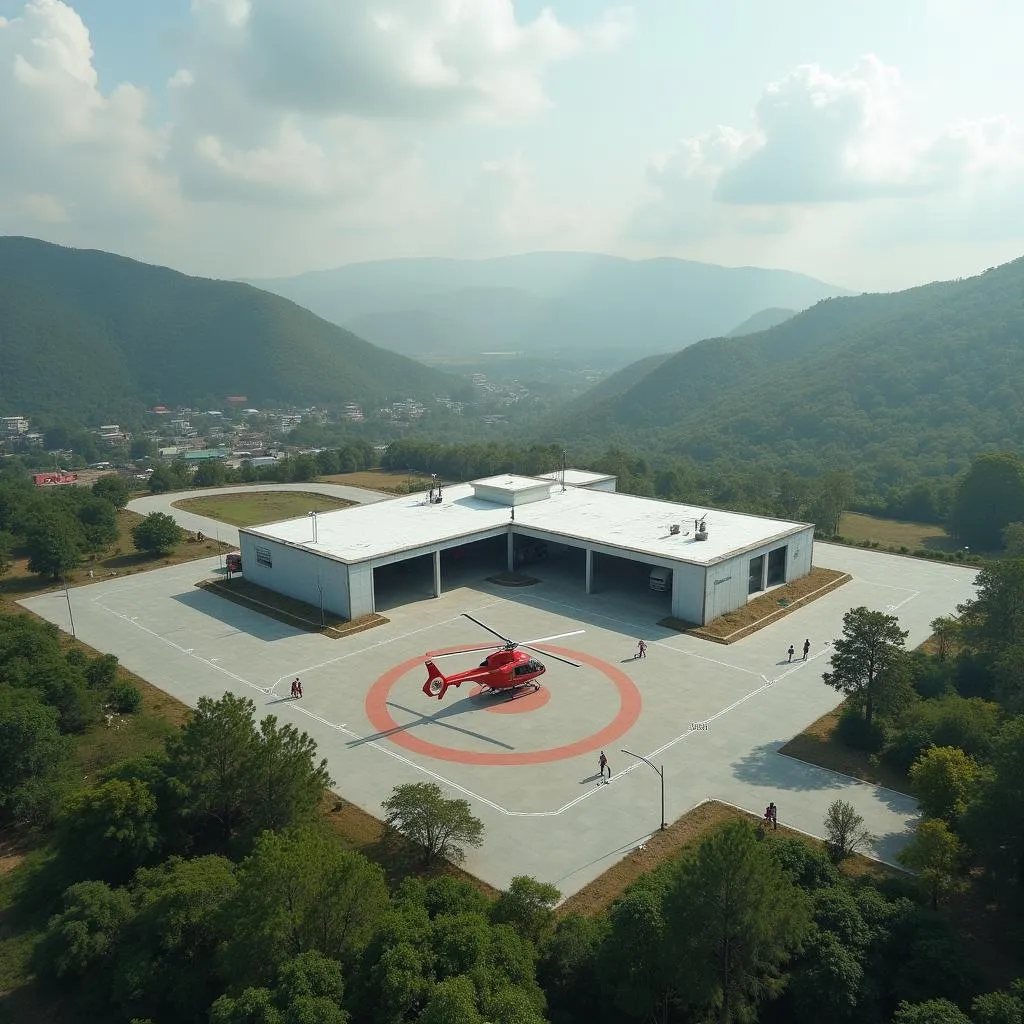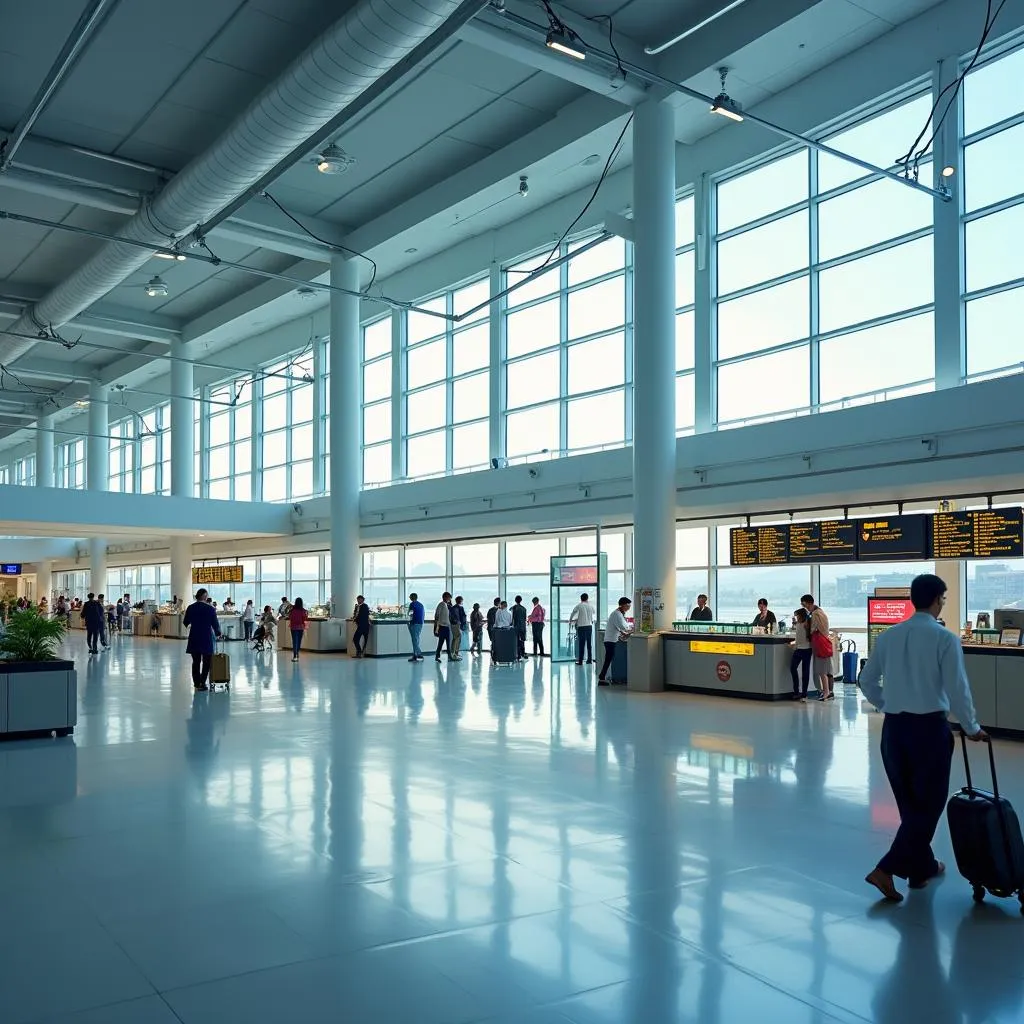India, a vibrant nation with a rich history and diverse landscape, boasts a vast network of airports and heliports. These facilities play a vital role in connecting people, goods, and services across the country. This article explores the diverse world of airports and heliports in India, providing insightful information about their history, infrastructure, and operations.
The Evolution of Airports and Heliports in India
The origins of aviation in India can be traced back to the early 20th century. The first commercial flight in India took place in 1911, and the country’s first airport, the Dum Dum Airport in Kolkata, opened in 1924. Since then, the Indian aviation sector has undergone a remarkable transformation, with the growth of airports and heliports playing a crucial role.
India’s airport network has evolved significantly in recent decades. The government has invested heavily in modernizing and expanding existing airports, as well as constructing new ones. This has resulted in a robust network of airports, catering to a wide range of domestic and international travelers.
Types of Airports and Heliports in India
India’s aviation infrastructure encompasses various types of airports and heliports, each designed to serve specific needs and purposes.
International Airports
International airports are the gateways to India, facilitating global connectivity and contributing significantly to the country’s tourism and trade. They handle a large volume of passenger and cargo traffic, offering various amenities and services. Some of India’s major international airports include:
- Indira Gandhi International Airport (Delhi)
- Chhatrapati Shivaji Maharaj International Airport (Mumbai)
- Kempegowda International Airport (Bengaluru)
- Netaji Subhas Chandra Bose International Airport (Kolkata)
- Chennai International Airport (Chennai)
Domestic Airports
Domestic airports are strategically located across India, connecting various cities and towns. These airports play a crucial role in domestic travel, facilitating business and leisure trips within the country. Some prominent domestic airports in India include:
- Rajiv Gandhi International Airport (Hyderabad)
- Cochin International Airport (Kochi)
- Jayprakash Narayan International Airport (Patna)
- Calicut International Airport (Kozhikode)
- Goa International Airport (Goa)
Heliports
Heliports are specialized facilities designed to accommodate helicopters. They are often located in urban areas, near hospitals, or in remote locations where access by conventional aircraft is challenging. Heliports play a crucial role in emergency medical transport, disaster relief, and providing access to remote areas.
Infrastructure and Facilities
Indian airports and heliports are equipped with modern infrastructure and facilities to ensure smooth operations and passenger convenience.
Runways and Taxiways
Runways provide the surface for aircraft to take off and land. They are typically made of asphalt or concrete, ensuring the safety and stability of aircraft operations. Taxiways are the pathways used by aircraft to navigate between the runway and the terminal building.
Terminal Buildings
Terminal buildings are the central hubs of airports, housing check-in counters, security checkpoints, baggage claim areas, and other passenger facilities. They are designed to handle large volumes of passengers efficiently and comfortably.
Air Traffic Control (ATC)
ATC is responsible for managing air traffic in and around airports. ATC controllers use radar and other technologies to monitor aircraft movements, ensuring safe separation between aircraft and coordinating landings and takeoffs.
Other Facilities
Airports and heliports offer a wide range of other facilities, including:
- Baggage handling systems
- Catering services
- Duty-free shops
- Lounges
- Parking facilities
- Ground transportation
Safety and Security Measures
Safety and security are of paramount importance at airports and heliports. Rigorous measures are in place to ensure the safety of passengers, crew, and aircraft.
Airport Security
Airports have multiple layers of security measures, including:
- Passenger screening
- Baggage screening
- Perimeter security
- Surveillance systems
- Security personnel
Aircraft Safety
Aircraft safety is maintained through:
- Regular maintenance
- Pilot training
- Safety regulations
- Emergency procedures
The Future of Airports and Heliports in India
The Indian aviation sector is poised for continued growth in the coming years. The government’s focus on infrastructure development and increasing air connectivity is expected to drive further expansion of airports and heliports across the country.
Key Trends
- Growth in air travel: India is witnessing a surge in domestic and international air travel, fueled by economic growth and rising disposable incomes.
- Focus on regional connectivity: The government is promoting regional connectivity through the development of new airports and airstrips in smaller towns and cities.
- Adoption of new technologies: Airports and heliports are embracing advanced technologies, such as artificial intelligence (AI) and robotics, to enhance efficiency and optimize operations.
Expert Insights
“The aviation sector is a key driver of economic growth in India. The government’s commitment to infrastructure development and modernization of airports is crucial for ensuring the seamless movement of passengers, goods, and services across the country,” says Dr. Avinash Sharma, a renowned aviation expert.
“India has a vast potential for the growth of heliports, particularly in urban areas and remote locations. Heliports can provide efficient and cost-effective solutions for emergency medical transport, disaster relief, and access to remote areas,” notes Mr. Sanjay Kumar, a prominent helicopter pilot and aviation consultant.
Conclusion
India’s airport and heliport network is a testament to the country’s growing economy and the increasing demand for air travel. With the government’s continued investment in infrastructure and technological advancements, the future of aviation in India looks bright.
Airports and heliports play a critical role in connecting people, goods, and services across India. They are essential infrastructure for the country’s economic growth and development. By understanding the evolution, types, infrastructure, and future trends of airports and heliports in India, we gain valuable insights into the dynamic world of aviation in this vibrant nation.
FAQ
Q: What are the busiest airports in India?
A: The busiest airports in India are Indira Gandhi International Airport (Delhi), Chhatrapati Shivaji Maharaj International Airport (Mumbai), and Kempegowda International Airport (Bengaluru).
Q: How can I book a flight to India?
A: You can book a flight to India through online travel agencies, airline websites, or travel agents.
Q: What are the security procedures at Indian airports?
A: Indian airports follow strict security procedures, including passenger screening, baggage screening, and perimeter security measures.
Q: What are the facilities available at Indian airports?
A: Indian airports offer a range of facilities, including check-in counters, security checkpoints, baggage claim areas, duty-free shops, lounges, and parking facilities.
Q: What are the future plans for the development of airports and heliports in India?
A: The government is investing heavily in infrastructure development and increasing air connectivity, with plans to build new airports, expand existing ones, and promote regional connectivity through the development of heliports.
 Runway at an Indian Airport
Runway at an Indian Airport
 Heliport in India
Heliport in India
 Airport Terminal Building
Airport Terminal Building
If you have any further questions About Airports And Heliports In India, please do not hesitate to contact us. Our team of aviation experts is here to assist you.
Contact Information:
Phone: +13089626264
Email: [email protected]
Address: 404 Bothwell St, Oxford, NE 68967, Hoa Kỳ
We are available 24/7 to answer your questions and provide you with the information you need.
